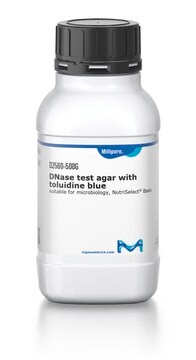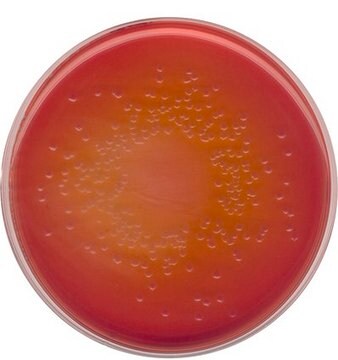15821
Klebsiella Selective Supplement
suitable for microbiology
Synonym(s):
Carbenicillin, α-Carboxybenzylpenicillin solution
About This Item
Recommended Products
sterility
sterile
form
powder
shelf life
limited shelf life, expiry date on the label
application(s)
clinical testing
environmental
food and beverages
microbiology
storage temp.
2-8°C
suitability
Klebsiella spp.
SMILES string
CC1(C)S[C@@H]2[C@H](NC(=O)C(C(O)=O)c3ccccc3)C(=O)N2[C@H]1C(O)=O
InChI
1S/C17H18N2O6S/c1-17(2)11(16(24)25)19-13(21)10(14(19)26-17)18-12(20)9(15(22)23)8-6-4-3-5-7-8/h3-7,9-11,14H,1-2H3,(H,18,20)(H,22,23)(H,24,25)/t9?,10-,11+,14-/m1/s1
InChI key
FPPNZSSZRUTDAP-UWFZAAFLSA-N
Looking for similar products? Visit Product Comparison Guide
Related Categories
Application
Biochem/physiol Actions
Components
Carbenicillin 25 mg
Signal Word
Danger
Hazard Statements
Precautionary Statements
Hazard Classifications
Resp. Sens. 1 - Skin Sens. 1
Storage Class Code
11 - Combustible Solids
WGK
WGK 3
Flash Point(F)
Not applicable
Flash Point(C)
Not applicable
Personal Protective Equipment
Choose from one of the most recent versions:
Already Own This Product?
Find documentation for the products that you have recently purchased in the Document Library.
Customers Also Viewed
Our team of scientists has experience in all areas of research including Life Science, Material Science, Chemical Synthesis, Chromatography, Analytical and many others.
Contact Technical Service










